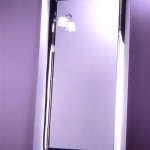Wireless Screen Mirroring Windows 10 to Samsung TV
Wireless screen mirroring, the ability to display the content of a computer screen on a television without the use of cables, has become a common feature in modern homes and offices. This functionality provides a convenient way to share presentations, watch videos, or simply browse the internet on a larger display. This article will focus on the process of establishing a wireless screen mirroring connection between a Windows 10 computer and a Samsung television.
Before attempting to connect, it's crucial to ensure both the Windows 10 computer and the Samsung TV meet the necessary requirements. The computer must be running a compatible version of Windows 10, typically version 1607 (Anniversary Update) or later. Older versions may lack the necessary Miracast support. The Samsung TV, similarly, needs to be a relatively recent model. Most Samsung Smart TVs manufactured within the last few years support screen mirroring or casting functionalities, usually utilizing Miracast technology.
Furthermore, both devices must be connected to the same Wi-Fi network. While the actual screen mirroring process doesn't necessarily rely on a continuous internet connection, the initial discovery and negotiation between the devices require network access. Ensuring both devices are on the same network is a prerequisite for establishing a successful connection. It is also beneficial to ensure the Wi-Fi signal strength is adequate for both devices to avoid lag or disconnection during mirroring.
Verifying Miracast Support on Windows 10
Miracast is the wireless display technology underpinning most screen mirroring implementations on Windows 10. It enables the computer to wirelessly transmit its screen information to a compatible receiver, such as a Samsung TV. To verify Miracast support on a Windows 10 computer, users can utilize the DirectX Diagnostic Tool (dxdiag).
To access the DirectX Diagnostic Tool, press the Windows key, type "dxdiag," and press Enter. This will open the DirectX Diagnostic Tool window. Navigate to the "Save All Information" button and save the file to a location on the computer. Open the saved text file and search for "Miracast."
If the file indicates "Miracast: Available," then the Windows 10 computer supports Miracast. If the file states "Miracast: Not Available," then the computer either lacks the necessary hardware or driver support for Miracast. In this case, updating the display drivers or potentially upgrading the wireless adapter may be required.
Another method to quickly check for Miracast support involves using the "Connect" quick action. Press the Windows key + A to open the Action Center. If the "Connect" button is present, then the computer likely supports Miracast. However, the presence of the button doesn't definitively guarantee full functionality, especially if driver issues exist.
If encountering issues with Miracast, checking the device manager for any driver errors related to the display adapter or network adapter is advisable. Outdated or corrupted drivers can often hinder Miracast functionality. Download and install the latest drivers from the manufacturer's website (e.g., Intel, NVIDIA, AMD for the display adapter; Intel, Qualcomm, Broadcom for the network adapter).
Initiating Screen Mirroring from Windows 10
Once Miracast support is verified and both the Windows 10 computer and Samsung TV are connected to the same Wi-Fi network, the screen mirroring process can be initiated. This is typically done through the "Connect" feature in Windows 10.
Press the Windows key + A to open the Action Center. Click on the "Connect" button. Windows 10 will begin scanning for available wireless display devices on the network. The Samsung TV should appear in the list of available devices, provided it is powered on and configured to accept incoming connections.
Select the Samsung TV from the list. A connection request will be sent to the TV. The Samsung TV will display a notification prompting the user to allow the connection. Using the TV remote, confirm the connection request.
After the connection is established, the Windows 10 screen will be mirrored on the Samsung TV. The display mode can be configured through the "Project" settings. To access the Project settings, press the Windows key + P. This will open a sidebar with options such as "PC screen only," "Duplicate," "Extend," and "Second screen only."
"Duplicate" will mirror the entire Windows 10 screen onto the TV. "Extend" will treat the TV as an extension of the desktop, allowing the user to drag windows and applications onto the TV screen. "Second screen only" will disable the display on the computer's monitor and only display content on the TV.
During screen mirroring, the performance can be affected by various factors, including the Wi-Fi signal strength, the distance between the computer and the TV, and the resolution of the display. Lowering the resolution or closing unnecessary applications on the computer can improve performance and reduce lag.
Troubleshooting Common Screen Mirroring Issues
Despite following the correct steps, various issues can arise during the screen mirroring process. These issues can range from connection failures to display problems and performance issues. Addressing these problems requires a systematic approach.
One common issue is the TV not appearing in the list of available devices. This could be due to several reasons: the TV is not powered on, the TV is not configured to accept incoming connections, the TV and computer are not on the same Wi-Fi network, or the Wi-Fi signal strength is too weak. Verify each of these potential issues to isolate the cause.
On Samsung TVs, ensure that the screen mirroring feature is enabled in the TV's settings. The specific settings vary depending on the model, but it is often found under "Network," "External Device Manager," or "Connection Guide." Look for settings related to "Screen Mirroring," "Miracast," or "Wireless Display."
Another common issue is a black screen or distorted display on the TV. This can be caused by incompatible display resolutions or outdated display drivers. Try adjusting the display resolution on the Windows 10 computer to match the native resolution of the TV. As mentioned earlier, updating the display drivers is also a crucial step in resolving display-related issues.
Performance issues, such as lag or stuttering, can be caused by a weak Wi-Fi signal, interference from other wireless devices, or limitations in the computer's hardware. Try moving the computer closer to the Wi-Fi router or the TV to improve the signal strength. Closing unnecessary applications on the computer can also free up resources and improve performance.
Firewall settings on the Windows 10 computer can sometimes interfere with screen mirroring. Check the Windows Firewall settings to ensure that Miracast-related services are allowed through the firewall. Specifically, look for services related to "Wireless Display" or "Network Discovery."
In some cases, third-party software or utilities can interfere with screen mirroring functionality. Temporarily disabling or uninstalling such software can help identify if it is the root cause of the problem.
If all else fails, restarting both the Windows 10 computer and the Samsung TV can often resolve temporary glitches or software conflicts. A simple reboot can clear cached data and reset network connections, potentially resolving the screen mirroring issue.
Finally, consider checking for firmware updates for both the Windows 10 computer and the Samsung TV. Manufacturers often release firmware updates to address bugs, improve performance, and add new features. Installing the latest firmware can resolve compatibility issues and improve the overall screen mirroring experience.
By systematically troubleshooting these potential issues, users can typically resolve most screen mirroring problems between a Windows 10 computer and a Samsung TV, enabling seamless wireless display functionality.

How To Use The Pc On Tv Your Samsung Smart Caribbean

How To Cast Windows 10 Android Tv Or Any Smart Beebom

Screen Mirroring To Your Samsung Tv

Screen Mirroring To Your Samsung Tv

How To Connect Windows 10 Laptop Samsung Smart Tv With Wi Fi Connection

What Is Screen Mirroring And How Do I Use It With My Samsung Tv Mobile Device

Screen Mirroring To Your Samsung Tv

How To Use Screen Mirroring Function Of Smart Tv Samsung New Zealand

How To Cast Or Screen Mirror Windows 10 A Smart Tv

How To Screen Mirror Laptop Tv Samsung








